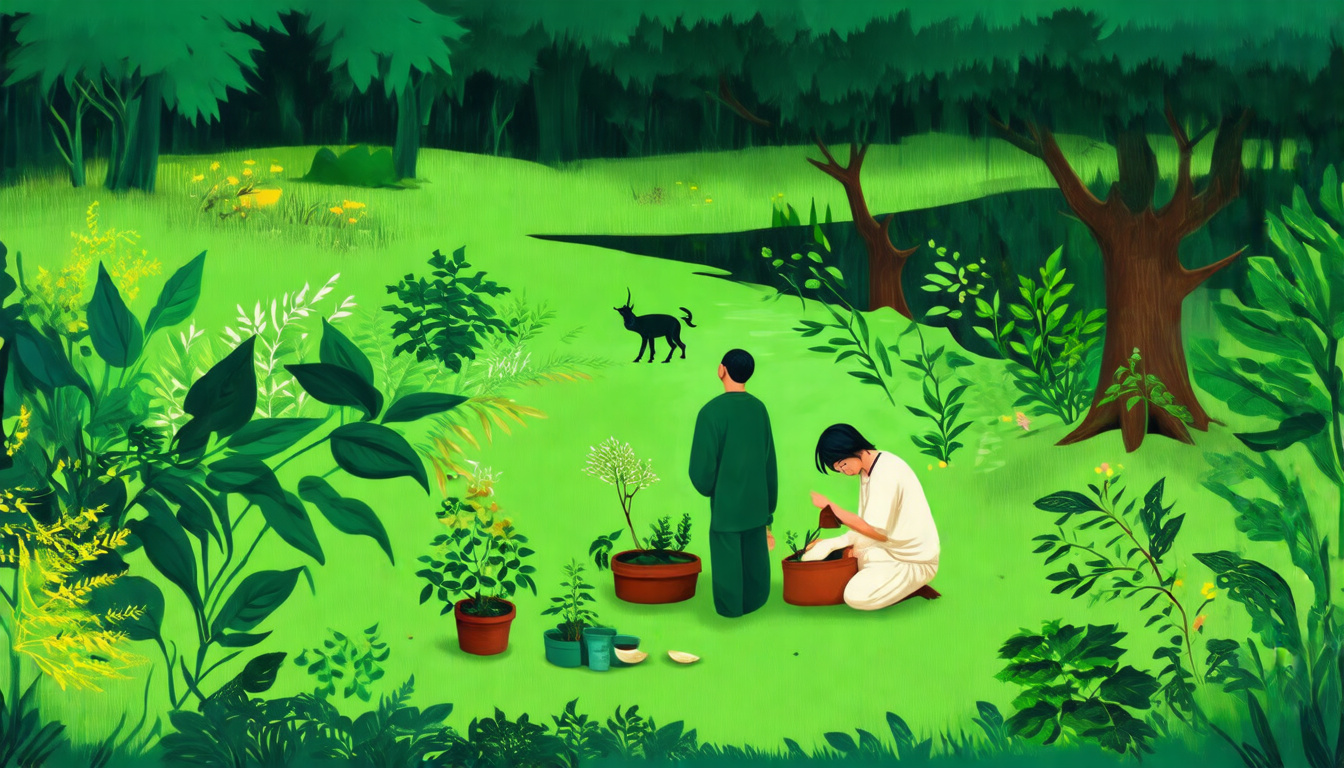
Harvesting Nature Responsibly: A Comprehensive Guide to Ethical Wildcrafting Practices
Share
Harvesting Nature Responsibly: A Guide to Ethical Wildcrafting Practices
Introduction to Ethical Wildcrafting
Wildcrafting means gathering plants from nature. It connects you with the earth and gives access to strong medicines, food, and art supplies. Collecting wild plants can feel good, but it asks you to care for small ecosystems and plant life. Ethical wildcrafting keeps plants many and balanced, and it builds a kind link between people and nature.
This guide gives clear ideas and safe habits to help you collect wild plants in a kind way that keeps both plants and their homes safe.

Understanding the Need for Ethical Harvesting
Plants hold a key part in natural systems. They support animals, keep soil healthy, and grow the variety of life. When plants are taken in a hasty way—by picking too many, cutting whole parts, or hurting the soil—the natural links fall apart. For plants that grow slow or are scarce, too much taking can drop their numbers fast.
Ethical wildcrafting sees people as caretakers of nature. It means you collect with care, cut only what you need, and let plants grow back strong. This method saves nature’s gifts and respects the give-and-take between people and plants.
Key Principles of Ethical Wildcrafting
-
Do No Harm
• Cut only what you can live with.
• For plants that grow back, pick leaves, berries, or small branches so the plant stays strong.
• Do not pull whole roots or take bark that kills a tree.
• If you must take roots, remove only bits and then plant some back to help growth. -
Take Only What You Need
• Pick only small amounts that you can truly use.
• A good rule is to remove less than one-fifth of a plant group so many survive to make seeds and feed animals. -
Know Your Plants
• Make sure you can tell each plant apart with care.
• Learn which plants are common and which are at risk.
• Knowing plant cycles helps to decide the right time and amount to take. -
Harvest in Many Places
• Spread your picking over many spots.
• Do not return again and again to one area.
• This habit gives plants time to grow and spread again. -
Keep the Land Intact
• Watch how you step on the ground to avoid breaking fragile soil.
• Try not to scare away animals or change their homes.
• Leave the spot as good or better than you found it. -
Show Respect
• Some people take a moment to say thanks or to ask the plant before they gather.
• This small act strengthens the kind link between you and nature.
Practical Guidelines for Ethical Wildcrafting
Preparing to Pick
• Study local plants to know which ones are safe and steady to collect.
• Check if you need any permit or permission, and respect private lands.
• Look at the spot: Are the plants strong and many? Is there a sign that someone else has already gathered there? Do animals live near these plants?
• Be aware of your own feelings. Work with a calm and kind mind.
How to Gather
• For green herbs, clip the stem near a leaf point instead of pulling the whole stem to help the plant grow back.
• When taking roots, dig out only enough, leave small bits, and plant some back.
• For trees, do not remove all bark at one spot since that cuts off life. Instead, gather bark from branches that have fallen or from small areas on live trees.
• Pick the right time in the plant’s cycle, such as after the seeds have set, when the healing parts are best.
After the Pick
• Fill in any holes you dig to help keep the soil firm and stop erosion.
• Plant back parts of roots or sow seeds in the area so new plants can grow.
• Remove extra plant bits so that the area stays neat and free from disease seeds.
• Check back on your spot to see how plants return and think on how you may change your method.
Avoiding Common Errors
• Do not pick the oldest and largest plants. They are the strongest and help future growth.
• Do not collect from lands that are easily hurt or full of man-made waste.
• Do not take protected or rare plants unless you have strict permission and a careful plan.
• Do not harvest plants when they are out of season or in risky spots.
Supporting Conservation Through Wildcrafting
Ethical wildcrafters can help save plant life by:
• Teaching others about safe ways to pick and care for the land.
• Taking part in or starting projects that plant back and restore at-risk species.
• Choosing plants that grow fast and are common when you can, so you do not stress rare ones.
• Working with local groups to mark sensitive areas and to back safe rules.
The Spiritual and Cultural Side
In many traditions, people show respect during the gathering of wild plants. They pause to ask the plant for its gift, give a kind thank you, or make a small token. These acts add a deep sense of care and responsibility to the work.
Conclusion: Building a Lasting Link With Nature
Ethical wildcrafting is not just about collecting plants. It is a careful and kind act with the living world. By respecting the cycles of life and the groups of plants and animals, wildcrafters help keep food, medicine, and art supplies many for years ahead. This work helps both plant life and our own spirit by keeping us linked with the earth.
See wildcrafting as a calm meeting with nature. Listen, learn, and give back. In this way, each harvest holds a deep meaning as you work side by side with the land.
